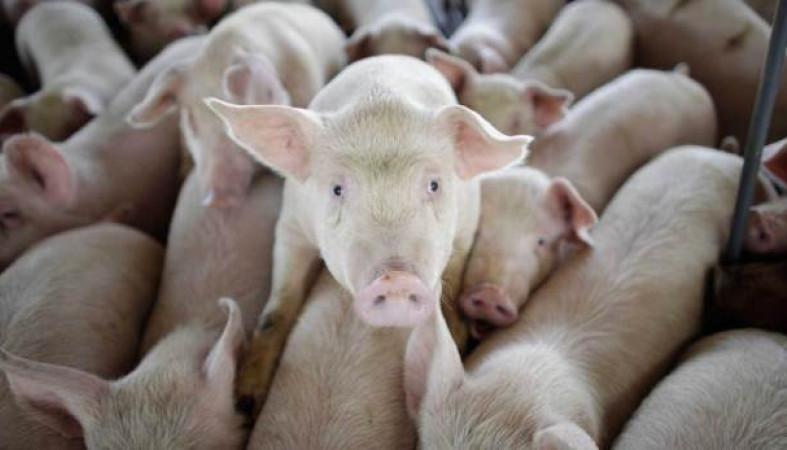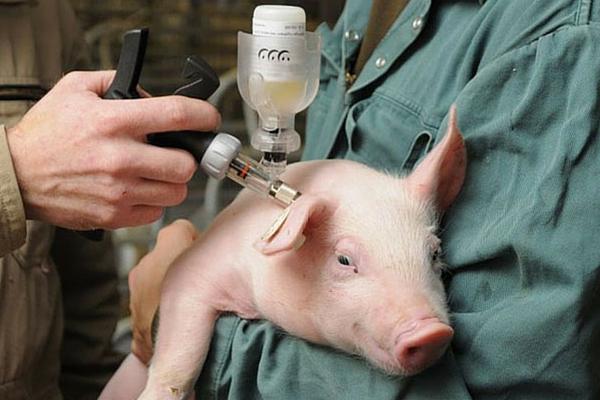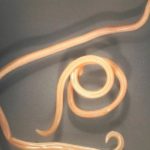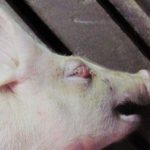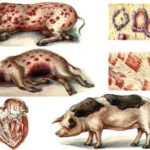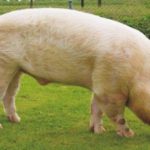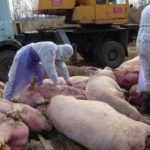When raising pigs, an important task is to organize preventive measures for the occurrence and spread of infectious diseases. One of the most dangerous infections is salmonellosis, which affects pigs, and most often piglets. To prevent infection of animals, it is important to know the main causes of the disease and its symptoms. Prevention measures are of great importance.
What is paratyphoid?
When an animal's body is affected by paratyphoid fever, the intestines and lungs are the first to suffer.The incidence of disease is high in piglets because their immune system is poorly developed to resist the disease. The aerobic paratyphoid bacterium Salmonella has the appearance of an oval rod with lateral flagella, thanks to which it moves. The duration of the incubation period for piglets after weaning is one and a half to three weeks; for suckling babies this period is shorter.
Bacteria exhibit high resistance to high/low temperatures and many disinfectants. This feature creates significant difficulties in treating animals and necessitates special preventive measures. When detecting and treating a disease, it must be taken into account that bacteria remain viable for about six months, even in conditions of negative temperatures and ultraviolet light.
Causes
On prosperous farms where quality animal care is provided, sources of infection can be:
- low-quality feed (meat and bone meal contaminated with pathogenic bacteria);
- pigeons, cats, sparrows, rodents, acting as mechanical carriers of the disease;
- importation of salmonella-carrying pigs into the farm (the presence of 20% of the bacteria-carrying individuals is sufficient to infect the herd).
The main spreaders of the infection are infected pigs, recovered individuals (the duration of bacterial carriage lasts about a year), and their excrement. Lactating sows that carry Salmonella become sources of paratyphoid fever for piglets. Moreover, the disease affects both the litters of such sows and other piglets. Sometimes intrauterine infection of the fetus occurs.
An outbreak of the disease can occur if healthy animals are placed in pens that previously housed sick animals, but the fences were poorly washed and disinfected.Unbalanced nutrition, lack of vitamins and microelements are predisposing factors for the occurrence of the disease in piglets.
Symptoms and forms
Clinical signs of damage to the body by Salmonella are determined by the course of the disease. There are three forms of paratyphoid fever. In acute cases, piglets have a body temperature of 41-42 °C. Newborns lack a sucking reflex; older piglets refuse food. The rules of behavior are also violated: animals try to bury themselves in the bedding; due to colicky pain, piglets lie on their chests, tucking in their hind legs and stretching out their front ones. Heavy breathing, diarrhea, and vomiting occur. Approximately half of the piglets die on days 3-7 of illness.
The subacute form of paratyphoid is characterized by the same clinical picture as the acute form, only the symptoms of the disease appear to a lesser extent. Sick animals breathe rapidly, cough, may refuse to eat, and diarrhea alternates with constipation. There is a possibility of pneumonia. Of the infected piglets, 40% die. The chronic form of the disease lasts longer, the symptoms of infection are not clearly expressed. The disease lasts 8-9 days and ends with recovery of most animals.
Diagnosis of the disease
Paratyphoid fever mainly affects young animals. In animals, pneumonia is observed, necrotic and ulcerative lesions of the intestinal mucosa occur. Small brown or black crusts appear on the skin, resembling stuck dirt. Sudden weight loss, cough and frequent constipation are reasons to suspect that animals are infected with salmonella. To make a final diagnosis, not only the clinical picture is taken into account. Laboratory and pathological studies are carried out.
It is important to conduct laboratory tests on feeds fed to both young and adult pigs.
Treatment methods for paratyphoid fever in piglets
If signs of the disease are detected, quarantine will be organized on the farm. After measuring the temperature and clinical examination of all piglets, sick piglets are isolated. Before starting antibiotic treatment, samples are taken from infected animals for culture. This is necessary to check the sensitivity of salmonella identified on the farm to antibiotics. It is recommended to use streptomycin and chloramphenicol as treatment. The medicine is given to piglets with milk, three times a day. The approximate treatment period is 4-6 days.
Advice! Animals continue to take small doses of antibiotics for 2-3 days after recovery.
The use of immune serum in combination with Salmonella bacteriophage and antibiotics has a good effect. If pneumonia develops against the background of paratyphoid fever, intramuscular injections of streptomycin and penicillin are given twice a day and chloramphenicol and biomycin are added.
Danger of disease
The appearance of the disease leads to the rapid loss of young animals (about half of the piglets). Piglets that have recovered from the disease subsequently grow and develop worse.
Prevention
A reliable way to prevent the onset of the disease is to vaccinate piglets aged from 10 days to one and a half months. A special polyvalent vaccine is used (against salmonellosis, diplococcal infection and pasteurellosis). Vaccination of pregnant queens is carried out 35-40 days before farrowing. Adult pigs are vaccinated every six months. Weak piglets that do not gain weight or are lagging behind in development are placed in separate pens, providing them with the best conditions of care and maintenance.
An important preventive measure is the treatment of premises. Thoroughly clean and disinfect floors, walls, and feeders. Common disinfectants are caustic soda, formaldehyde, and freshly slaked lime. The pens are treated weekly. The floors in the premises must be dry, warm, and convenient for disinfection.
Feeders and drinking bowls are cleaned of food residues, washed after each feeding, and dried. Equipment and animal care items are treated with special means. To prevent the occurrence of paratyphoid fever and its spread by rodents, deratization of premises is carried out. Control over the operation of ventilation and sewerage is required.
Also, appropriate conditions for keeping piglets are created in the premises: the air temperature is maintained at 20-23 ° C, humidity should be 50-65%. The diet is varied according to the age of the piglets. Self-prepared food is supplemented with vitamin supplements.
Paratyphoid fever is a serious infectious disease. The danger lies not only in the death of animals and the reduction of livestock. The possibility of salmonellosis affecting people working on farms cannot be ruled out. It is important to consider that the source of infection can be the meat of sick pigs.


